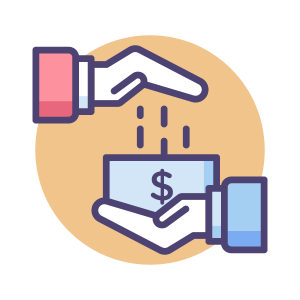The following are the must-dos for accurate pricing.
Grantmakers must put a strategy in place.
Trying to evaluate the social effect of your grant program without a plan is like searching for something in the dark. Inevitably, you’d waste time and inadvertently knock things over.
A plan aids the evaluation of your grant program’s performance. It emphasizes critical performance indicators and possible outcomes. It also establishes the vision and identifies who and what to consider during the calculation process.
It also aids in framework alignment. For example, the goals for Sustainability Development and Reporting Initiative Standards Globally and Social Return on Investment are some of the most well-known frameworks. You are, however, free to develop your framework.
You’re ready to begin once you’ve devised a strategy.
What will be measured and when it will occur are two key questions.
The second stage is to choose which metrics to track and when to measure them.
If your grant program is laser-focused, the metrics are simple. The efforts and outcomes of the metrics, as mentioned above, are typical.
For a program that focuses on education, its metrics might include the amount of money and other resources provided, graduation rates, teacher retention rates, percentage of students who have access to technology, college readiness, bachelor’s degree completion rates, and reading test scores.
However, suppose the grant is designed to help individuals and families in need access to essential health and social services. In that case, the metrics might include money and other resources spent, patient involvement, health resiliency, immunization rates, and more. The grantmaker can easily measure the metrics of a targeted program since they are under its control.
It’s critical to choose the timing for assessing the social impact of the grant program. Are you concerned with short-term or long-term objectives? Choose whichever you prefer, and make sure you plan ahead of time.
If you’re looking at long-term objectives, allow for more time for measurement. Patience and adaptability will also be necessary.
Recognize your position and influence.
Assessing the social impact of your grant program requires a cautious approach. First, consider the actual results against your initial targets with extreme caution. Then, determine how far your goals contributed to the more significant outcomes and place your efforts in their proper context. This will guarantee a clear view of your impact on the intended purposes.
The essential advantage of this strategy is that it’s simple to take credit for desirable outcomes from your grant program when, in reality, your grant program may not have been solely responsible for such results. Perhaps it didn’t make any contribution at all.
To figure out how much of the outcome is due to your influence, take note of:
- Your organization’s efforts
- Other entities that are currently working directly with you
- Organizations and persons who are not connected to your program but whose aims are the same or overlap in some way
- Other circumstances that may influence the ultimate results include economic conditions, political climate, public health issues, and other factors.
However, there are disadvantages to claiming credit for outcomes independent of your efforts, such as creating the impression that you’ve accomplished something when you haven’t, misinforming stakeholders, fostering complacency, and failing to address a problematic grant program.
Share your own experiences.
Grantmakers should also seek stories from individuals in their community who have benefited from their efforts to assess the social impact of their programs.
It’s simple to be concerned with numbers when calculating the pay-off of grant initiatives, but stories and tales add humanity to these cold figures.
Stories have bound us, as a species, since time immemorial. As a result, they naturally demonstrate the link between funders’ efforts, immediate results, and ultimate outcomes. Stories also paint a clearer picture of how each component of the grant program integrates to achieve the intended effect in a way that numbers can’t.
For example, a record of the number of health clinics in a particular area may appear uninteresting. However, with information on how:
- Community health centers improved community access to medical care.
- People’s health improved due to having more accessible access to healthcare.
- Improved health conditions, in addition to other benefits, have resulted in greater productivity at work.
- The community has benefited economically as a result of improved health,
- Wages increased as a result of the increase in productivity.
- Impact stories speak louder than statistics if action is more potent than speech.
- These tales should be expressed in an accessible format, such as audio or video.
- Keep it human-friendly.
The human touch is essential in determining the influence of your grant initiatives. As a result, as a grantmaker, you may retain your humanity by being open, responsive, and accountable.
In assessing the social impact of your grant program, vulnerability implies being receptive to new information. The fact is that grant programs don’t consistently achieve the intended aim. But instead of crying over spilled milk when a program underachieves, here’s what you should do:
Admit your faults if you have any.
Recognize failure as an opportunity for progress.
Examine the circumstances that resulted in any underperformance to identify the source and implement solutions.
Listen to your stakeholders’ voices.
- It’s critical to pay attention to the clients or users and be responsive to their problems and ideas.
- It’s not only about measurement when it comes to social impact measurement. It’s also about the stakeholders’ voices being heard.
- It’s also critical to maintaining a positive relationship with stakeholders by being accountable. Funding organizations must show evidence of their accomplishments. As a result, make sure the measurement process is open and prepared to eliminate any non-productive aspect of the initiative.
Make the most of your grant administration system by applying for the best grants management software.
Finally, if you don’t have the required tools in your gadget box, you may never complete the task of measuring impact. The proper software can help you automate your entire grant lifecycle and allow you to gather the data you require. It should include entire grants management capabilities and assist you with:
- Collect data for performance measures and metrics.
- Analyze and manage the information you’ve gathered.
- Visualize the impact of data
- Collaborate with your team members to get the job done.
- Communicate in a variety of languages.
- The importance of the correct software cannot be overstated.
To summarize
It’s equally essential to assess the social impact of your grant program as it is to establish one. Would it make logic and sense to jump on a massive project and not measure its effects on the impacted communities? In addition, it’s critical to ensure that the work you’re doing delivers the results you want. The impact assessment process can be challenging, but it’s worth it that estimating the impact of grant programs on society might appear complicated. Still, it will be a breeze with these simple methods.
Whether you’re a startup organization or a leading corporation, CommunityForce provides fully customizable, all-in-one online scholarship management solutions to maximize your efficiency, simplify complex processes, and improve collaboration so you can focus on increasing your impact. We’ve helped organizations streamline their entire process no matter the size and scope of their giving.













